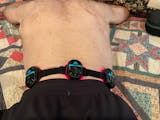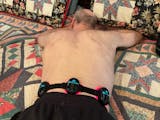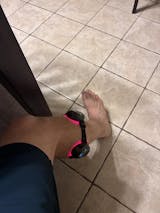Fda approved red light therapy has gained a lot of attention in recent years as a treatment for a variety of conditions. It’s often marketed as a safe and effective way to reduce pain, improve skin health, and accelerate recovery. But like any treatment, you may wonder: Is red light therapy safe? In this article, we’ll explore the safety of red light therapy, its potential benefits, and how to use it correctly, especially when considering
medical-grade red light therapy devices.
What Is Red Light Therapy
Understanding Red Light Therapy
Fda cleared red light therapy uses specific wavelengths of red and near-infrared light to penetrate the skin and promote healing. This non-invasive treatment has been used in both professional and home settings for various purposes, including pain relief, skin rejuvenation, and wound healing. It’s typically delivered through light panels, bulbs, or masks that target deep tissues.
How Red Light Therapy Works
Medical grade red light therapy works by stimulating cellular processes within the body. The light penetrates the skin and reaches the cells, where it increases energy production in the form of ATP (adenosine triphosphate). This process helps promote healing, reduce inflammation, and even encourage the production of collagen, leading to improved skin health and faster muscle recovery.
Common Uses of Red Light Therapy
Red light therapy at home is commonly used for reducing pain and inflammation, improving skin tone and texture, and speeding up recovery from injuries or surgeries. It’s also used to treat conditions like acne, wrinkles, and even some joint disorders. Many people use red light therapy as part of a wellness routine to improve overall health and vitality.
The Benefits of Red Light Therapy
Pain Relief and Inflammation Reduction
One of the key benefits of red light therapy is its ability to reduce pain and inflammation. The therapy stimulates circulation and accelerates healing by increasing blood flow to the affected areas. This can be particularly helpful for people dealing with chronic pain, arthritis, or injuries.
Skin Health and Healing
Red light therapy is often used for improving skin health. It helps to reduce signs of aging, such as wrinkles and fine lines, by stimulating collagen production. Additionally, it can promote healing for conditions like acne scars, sun damage, and other skin imperfections. Many individuals use
red light therapy masks to target their facial skin specifically.
Muscle Recovery and Performance Enhancement
Athletes and fitness enthusiasts often use red light therapy to enhance muscle recovery and improve performance. By increasing blood flow and reducing inflammation, red light therapy speeds up the healing process after strenuous exercise, helping to prevent injury and reduce soreness.
Potential for Mental Health Improvements
Some research suggests that red light therapy devices for home use may help with mental health issues like depression and anxiety. It’s thought that the therapy’s effects on brain function could improve mood and reduce stress. However, this is still an area of ongoing research, and more studies are needed to confirm these benefits.
Is Red Light Therapy Safe for Everyone
Safety for Different Age Groups
Red light therapy is generally safe for most people, including adults and seniors. However, its safety for children isn’t as well studied, and it’s recommended that parents consult with a healthcare provider before using red light therapy on children. For seniors, red light therapy can be a great way to alleviate pain or improve skin health, but medical advice should be sought for those with underlying conditions.
Using Red Light Therapy During Pregnancy
There is limited research on the effects of red light therapy during pregnancy, so it's best to exercise caution. While many experts believe red light therapy is safe for most people, it’s always advisable to consult with a healthcare provider before starting any new treatments while pregnant.
Red Light Therapy for Children and Seniors
Red light therapy can be beneficial for both children and seniors, but age-related concerns should be taken into account. In children, use is typically only recommended for specific conditions, and for seniors, it can help with common issues like joint pain and skin health. Always seek professional advice before use.
Safety Considerations for Those with Health Conditions
If you have a pre-existing medical condition, such as cancer, lupus, or epilepsy, consult with a healthcare provider before using red light therapy. Though it is generally safe, certain conditions may require extra precautions. It’s important to ensure that red light therapy won’t interfere with your treatment or condition.
Risks and Side Effects of Red Light Therapy
Common Side Effects
For most people, red light therapy is well-tolerated with few side effects. However, some may experience mild redness, irritation, or a warming sensation in the treated area. These side effects typically subside shortly after the session. If they persist, it’s important to reduce treatment time or consult with a healthcare provider.
Eye Safety Concerns and Protection
Since red light therapy uses light that can be intense, it’s essential to protect your eyes. Prolonged exposure to the light without protection can lead to eye strain or damage. When using a
red light therapy panel, make sure to wear protective goggles or limit direct exposure to your eyes.
Risks of Overuse
Like with any therapy, overuse can lead to adverse effects. Excessive exposure to red light therapy may cause skin irritation or overstimulation of cells, which could lead to further discomfort. It’s crucial to follow the recommended duration and frequency of use for safe and effective results.
Are There Long-Term Risks
There is no significant evidence to suggest long-term risks of red light therapy when used properly. However, as with any treatment, using it excessively or incorrectly could potentially cause skin damage or other issues. It’s essential to follow the guidelines for use to avoid any negative consequences.
Medical-Grade Red Light Therapy Devices vs. Consumer-Grade Devices
What Makes Medical-Grade Devices Different
Medical-grade red light therapy devices are designed to meet higher standards of safety and effectiveness. These devices typically offer more powerful light output and cover a larger treatment area. They are also built with precise wavelengths that ensure optimal results. Medical-grade devices are generally recommended for serious conditions or for users seeking more targeted treatments.
Advantages of Using Medical-Grade Red Light Therapy Devices
The primary advantage of medical-grade devices is their superior quality and efficacy. These devices provide more consistent results due to their advanced technology. They are also typically more durable and safe, reducing the risk of malfunction or harm during use.
Potential Risks with Lower-Quality Devices
Consumer-grade devices may not offer the same level of safety or effectiveness as medical-grade ones. These devices could have improper wavelength settings, insufficient light power, or safety issues. For optimal results and safety, it’s recommended to invest in a high-quality,
medical-grade red light therapy device - PRUNGO FluxGo.
What to Look for in a Medical-Grade Device
When selecting a medical-grade device, look for features such as adjustable light intensity, customizable treatment times, and scientifically-backed wavelength settings. Also, check the manufacturer’s reputation and certifications to ensure you’re investing in a device that meets safety standards.
How to Use Red Light Therapy Safely
Proper Duration and Frequency of Use
To get the best results from red light therapy without overdoing it, it’s essential to follow the recommended duration and frequency. Most sessions last between 10-20 minutes, and treatments can be done a few times a week. Overuse can lead to skin irritation or overstimulation, so it's crucial to stick to the guidelines.
Best Practices for At-Home Red Light Therapy
If you're using a red light therapy device at home, ensure you’re using it in a controlled environment. Maintain the right distance from the light source, avoid direct eye exposure, and follow the manufacturer’s instructions. Consistency is key, so try to incorporate the therapy into your routine regularly for the best results.
Professional vs. At-Home Treatments
Professional treatments tend to be more powerful and precise than at-home devices. However, medical-grade red light therapy devices for home use can be just as effective if used correctly. At-home devices offer convenience and cost-effectiveness, but make sure you’re purchasing one that meets professional standards for safety.
How to Protect Your Skin and Eyes
While using red light therapy, it's essential to protect your skin and eyes. Use protective goggles if you’re using a high-intensity device and avoid focusing the light directly on your face for extended periods. Keep a safe distance from the light source to ensure effective and safe treatment.
Who Should Avoid Red Light Therapy
People with Light Sensitivity
If you’re sensitive to light or have conditions like photosensitivity, you should consult a healthcare provider before using red light therapy. Excessive light exposure can exacerbate these sensitivities, leading to discomfort or adverse reactions.
Those with Skin Conditions or Sensitivities
People with certain skin conditions like eczema, psoriasis, or rosacea may need to avoid red light therapy or use it cautiously. Always speak to a dermatologist before starting red light therapy to ensure it won’t worsen your skin condition.
Individuals with Certain Eye Conditions
Individuals with eye conditions like macular degeneration or glaucoma should avoid exposing their eyes to red light therapy without consulting a medical professional. Proper eye protection is crucial, but it's best to get advice from your eye care provider.
Medical Contraindications
If you are undergoing specific medical treatments, such as chemotherapy or radiation, or if you have certain implants or pacemakers, you should avoid red light therapy without consulting your doctor. Always check with a healthcare professional if you're unsure about potential interactions.
Conclusion
In conclusion, red light therapy is generally safe when used properly, particularly when using high-quality, medical-grade red light therapy devices. It offers numerous benefits, from pain relief to improved skin health, but it’s important to use the therapy as directed and protect yourself during sessions. If you’re looking for a high-quality red light therapy experience, consider investing in red light therapy panels or a red light therapy mask from Prungo. These devices offer professional-grade results at home, ensuring safety and effectiveness for all users.























0 comments